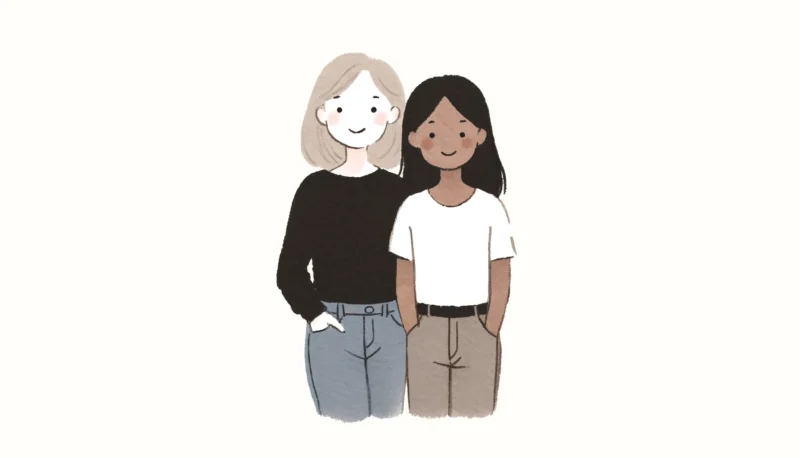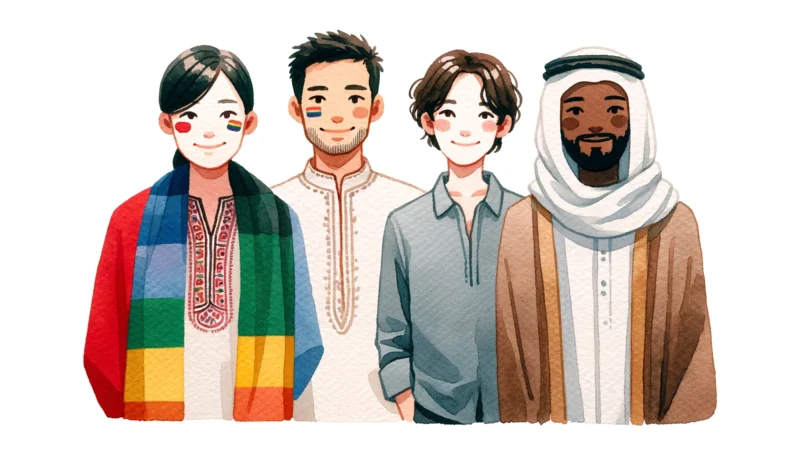Sexuality serves as a fundamental aspect of human experience, intricately woven with the fabric of cultural norms and social constructs that vary widely across the globe. From the most sexually active cultures to those considered the least sexually active countries, the diversity in sexual behavior, attitudes, and practices offers a rich field of study for understanding human sexuality within a cultural context. The exploration of types of sexuality, along with the comprehensive sexuality definition, sheds light on the complex interplay between individual desires and societal expectations. This analysis is vital, not only for comprehending the vast spectrum of sexuality of human beings but also for challenging sex taboos in different cultures and acknowledging the varied sexual practices in different cultures.
In this article, a comparative analysis of sexual norms will delve into the core of how cultural influences shape sexual desires, types of sexuality, and behaviors. From examining sexual culture and the nuances of sexuality and culture to understanding the impact of acculturation on sexual behaviors, the discussion will traverse through various dimensions of human sexuality. By juxtaposing the sexual practices in different cultures, from those of the most sexually active culture to the most sexually conservative countries, this analysis aims to offer a detailed exploration of how culture and sexuality interact. The resultant insights will not only contribute to the academic discourse on sexuality types but also highlight the diversity and richness of sexual culture around the world, providing a comprehensive understanding of the fundamental nature of sexuality.
Cultural Influences on Sexual Desires
Traditional Beliefs and Practices
Religious and cultural norms significantly shape sexual behaviors, often reinforcing traditional gender roles and sexual expectations. In many cultures, sexual activities are predominantly seen as means for reproduction, with non-procreative sexual acts viewed as immoral. Practices like female genital mutilation, deeply rooted in cultural beliefs about purity and modesty, highlight the severe impact of traditional practices on women’s sexual health and rights.
Religious Perspectives
Religious doctrines frequently dictate sexual conduct, generally promoting sexual activities within the confines of marriage and deeming other forms as sinful. This is particularly evident in how major religions approach issues of premarital sex and same-sex relationships, often leading to significant conflicts within the LGBTQIA+ community. The influence of religion extends into the sexual lives of older adults, affecting their sexual behaviors and perceptions.
Impact of Gender Roles
Gender roles profoundly influence sexual expectations and behaviors. Men are often expected to initiate sexual activities, while women are typically portrayed as passive recipients, which can suppress women’s expression of sexual desires. These roles not only affect individual sexual behavior but also shape societal perceptions of what is deemed acceptable or taboo concerning sexual conduct.
Comparative Analysis of Sexual Norms
Western Cultures
In Western cultures, dating often emphasizes individual desires and less formal courtship rituals, contrasting sharply with Asian norms where traditional roles and family involvement are more pronounced. This individualistic approach in Western cultures extends to general sexual behaviors, where autonomy in relationship decisions is common, often without familial input. Public displays of affection are widely accepted and practiced, reflecting a more open attitude towards sexual expressions compared to Eastern cultures.

Asian Cultures
Asian cultures exhibit more conservative sexual attitudes, including a traditional view on gender roles and non-intercourse sexual behaviors. The influence of intrinsic religiosity and religious fundamentalism is significant in shaping these conservative views, although less pronounced among Hispanics. Acculturation tends to align Asian sexual attitudes more closely with those of Euro-Americans, indicating a shift towards less conservative views as integration into Western culture increases.
Middle Eastern Cultures
The Middle East faces significant challenges related to gender inequality and restrictions on sexual autonomy, influenced by religious and cultural norms. Legal and social restrictions often jeopardize women’s sexual health and rights, with practices like female genital mutilation and honor crimes prevalent. Efforts for progressive reforms in sexuality-related laws have been stifled by religious movements, asserting that such reforms represent Western imposition on Muslim cultures.
African Cultures
In the Maghreb region of North Africa, there has been a notable sociopolitical transformation that includes increased women’s rights and participation in politics and education. However, the family remains a central institution regulating gender relations and sexual behavior, with traditional gender roles still prevalent and family wealth unequally divided. This ongoing traditionalism influences sexual norms and behaviors, maintaining a conservative stance despite modernizing influences.
Impact of Acculturation on Sexual Behaviors
Acculturation significantly influences sexual behaviors, varying notably between different ethnic groups and genders. Research indicates that Hispanic men and Asian women exhibit distinct acculturation models affecting their sexual practices. Hispanic men tend to follow an “ethnogenesis” model, where higher levels of mainstream acculturation increase casual sexual behaviors when heritage acculturation is low, but decrease them when heritage acculturation is high. Conversely, Asian women are more aligned with an “assimilation” model, showing stronger relationships between heritage acculturation and casual sexual behavior at lower levels of mainstream acculturation.
Assimilation and Ethnogenesis Models
These models illustrate how minority groups integrate or resist the sexual norms of mainstream culture. For Asian women, the assimilation into mainstream culture correlates with increased sexual activity, whereas for Hispanic men, maintaining a balance between heritage and mainstream cultures dictates their sexual behaviors.
Effects on Gender-Specific Behaviors
Gender plays a crucial role in how acculturation affects sexual behaviors. Studies suggest that acculturation impacts Hispanic and Asian women’s sexual behaviors more profoundly than their male counterparts. For instance, highly acculturated Asian-American women are likely to engage in intercourse more frequently than less acculturated peers, a pattern not as evident among Asian-American men. This gender-specific influence highlights the complexity of acculturation’s impact on sexual practices within these communities.
Conclusion
Throughout this comparative analysis, we have journeyed across the globe to uncover the intricate ways in which cultural norms shape our understanding and expression of sexuality. From the profound influence of religious and traditional practices that dictate sexual behavior to the impact of acculturation on sexual norms among different ethnic groups, it is clear that sexuality is not merely a matter of individual choice but is deeply embedded within the cultural and social frameworks that bind communities. This exploration has highlighted not only the diversity of sexual behaviors and attitudes across cultures but also the common challenges faced in reconciling personal desires with societal expectations.
The significance of these findings extends beyond academic discourse, offering valuable insights for policymakers, educators, and individuals alike as they navigate the complex interplay between culture and sexuality. By understanding the diverse ways in which culture informs sexual behavior and attitudes, there is a potential to foster more inclusive, respectful, and enriching discussions about sexuality. This, in turn, can pave the way for more progressive and empathetic approaches to sexuality education, rights, and freedoms around the world. In reflecting upon these insights, we are reminded of the importance of continuing to question and challenge the cultural norms that govern sexual behavior, in the hope of creating a more accepting and open world.
FAQs
- How does culture influence individual sexual behaviors?
-
- Culture significantly shapes people’s sexual behaviors through various aspects such as traditional values, religious beliefs, societal roles related to gender, and concepts of motherhood and masculinity. These cultural influences can dictate how sexuality is perceived and expressed within a society.
- What impact do cultural norms have on perceptions of sexuality?
-
- Cultural norms can greatly affect the messages people receive about sexuality. In some societies, there is a strong emphasis on abstaining from sexual activity until marriage, while other cultures might hold more progressive views on premarital relationships. These norms shape not only what behaviors are seen as acceptable but also how individuals view their own sexuality and that of others.
- In what ways do cultural values shape personal sexual views?
-
- Cultural values and norms can deeply influence personal views on sexuality. For instance, certain cultural practices like initiation rites may encourage early sexual activity and marriages among young girls. Additionally, prevailing gender norms might promote sexual abstinence in females and sexual assertiveness in males, thereby affecting personal sexual development and attitudes.
- What are the common social norms related to sexuality?
-
- Social norms around sexuality vary widely but generally define what is considered normal sexual behavior, which often includes specific limitations based on age, familial relationships, race/ethnicity, and socioeconomic status. These norms help determine acceptable sexual practices within different cultural contexts.











